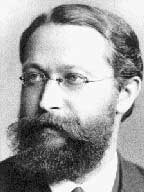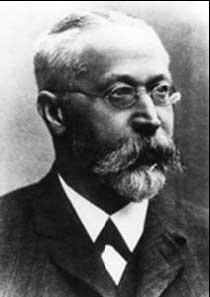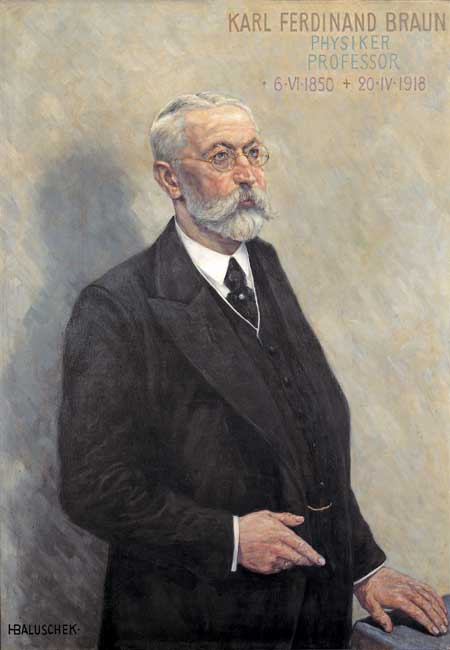- "Ferdinand Braun - Biography". Nobel Lectures. Physics 1901-1921, Elsevier Publishing Company, Amsterdam, 1967.
- Naughton, Russell, "Karl Ferdinand Braun, Dr : 1850 - 1918".
- "Karl Ferdinand Braun ". Biographies of Famous Electrochemists and Physicists Contributed to Understanding of Electricity.
- "Karl Ferdinand Braun". Timeline of Nobel Prize Winners, PHYSICS.
- Rybak, James P., "Forgotten" Pioneers of Wireless; Part 5 - Karl Ferdinand Braun".
- "Karl Ferdinand Braun, 1850-1918". (German) (English translation)]
.
Karl Ferdinand Braun
Karl Ferdinand Braun (6 June 1850 in Fulda, Germany – 20 April 1918 in New York City, USA) was a German inventor, physicist and Nobel Prize laureate.
Biography
Braun was educated at the University of Marburg and received a Ph.D from the University of Berlin in 1872. In 1874 he discovered that a point-contact semiconductor rectifies alternating current. He became director of the Physical Institute and professor of physics at the University of Strassburg in 1895. In 1897 he built the first cathode-ray tube oscilloscope(1) .CRT technology is to this day used by most television sets and computer monitors. The CRT is still called the "Braun tube" (Braunsche Röhre) in German-speaking countries (and in Japan: Buraun-kan).
During the development of radio, he also worked on wireless telegraphy. Around 1898, he invented a crystal diode rectifier or Cat's whisker diode. Guglielmo Marconi used Braun's patents (among others). Braun's British patent on tuning was used by Marconi in many of his tuning patents. Marconi would later admit to Braun himself that he had "borrowed" portions of Braun's work. In 1909 Braun shared the Nobel Prize for physics with Marconi for "contributions to the development of wireless telegraphy."
Braun went to the United States at the beginning of World War I to help defend the German wireless station at Sayville, N.Y. (on Long Island) against attacks by the British controlled Marconi Corporation. (At this time the U.S. had not yet entered the war). Braun died in his house in Brooklyn before the war ended in 1918.

Karl Ferdinand Braun
References
1. Keller, P.A., "The 100th Anniversary of the Cathode-Ray Tube," Information Display, Vol. 13, No. 10, 1997, pp. 28-32.

Karl Ferdinand Braun
References
Patent

Hans Baluschek (9.5.1879 Breslau Berlin - 28.9.1835)
Museumsstiftung Post und Telekommunikation, Inv. Nr. 4.0.790 , museumsstiftung.de
Berlin
Retrieved from "http://en.wikipedia.org/"
All text is available under the terms of the GNU Free Documentation License

